The definition of a game designer is a professional who works out a game’s mechanics and systems, whether as a freelancer, employee, or solo dev. Game designers are often confused with game developers, but designers are focused on the game’s rules more than the programming or artwork. Learn about what is necessary to become a game designer and what skills are needed to get into the industry. Understand what the work environment for a developer is like, and see examples of game designer salaries around the globe.
What is the definition of a game designer?
The definition of a game designer is a role in a game studio for turning a series of ideas and artwork into a fun game. Game designers aren’t the same thing as artists and programmers. Artists create 3D models, textures, and animations, but they don’t decide where that art is placed, when those animations play, and what actions from the player cause that to happen like designers do. Programmers support designers by implementing the rules and mechanics designers come up with, but they don’t decide what goes in.
Game designers begin with a game idea. A game begins with an intended set of actions a player does, or a feeling the game should give them. The principal designers enshrine these ideas in a game design document. A game design document includes core pillars that describe said actions and feelings. The One-Pager below shows how GDDs help designers narrow down a game’s most critical details.

A game designer then generates ideas for mechanics and systems that fit with those pillars. The designer finds a way to get the programmers to implement a new mechanic in a prototype, plans how to communicate it to the players, and maps out what other mechanics the new idea interacts with. Designers test the new mechanic, get feedback, adjust it, and test all over again.
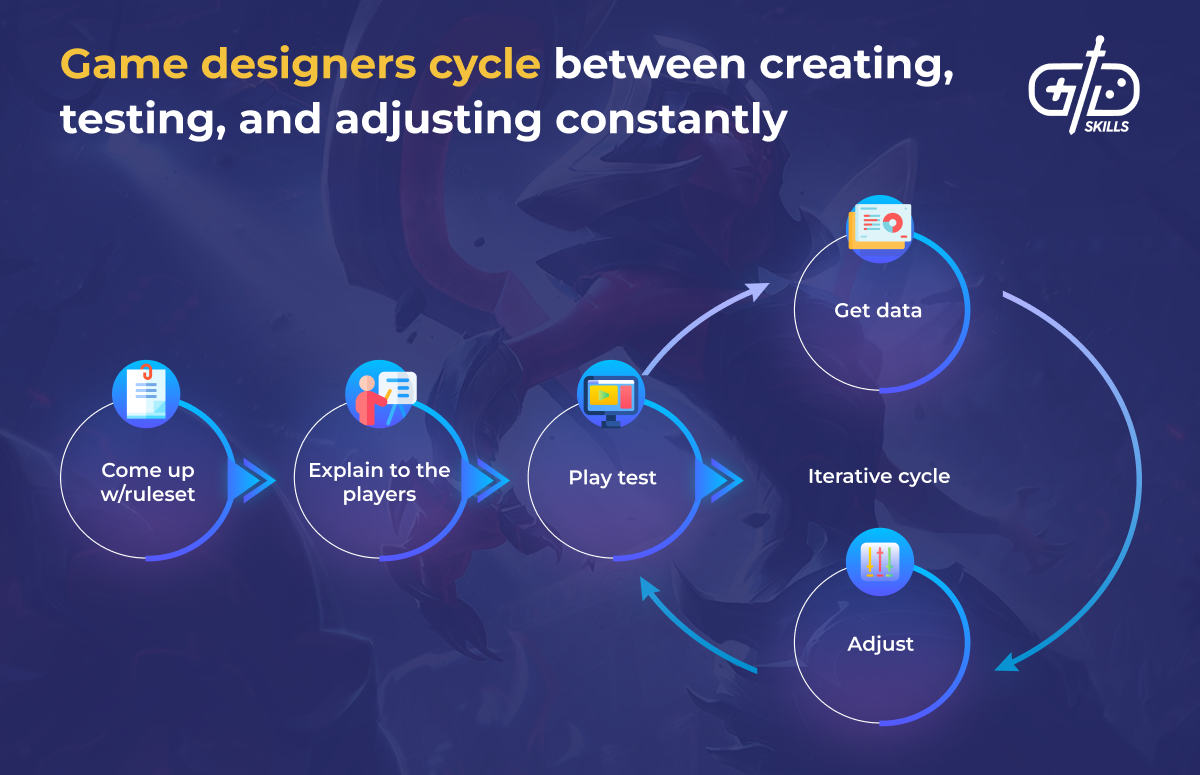
What a game designer does for a game changes based on the game but even the type of studio. A larger studio is able to afford to divide smaller tasks between different designers. Amir Rao and Greg Kasavin did all the design work for their studio’s first game, Bastion. AAA studios have many designers in contrast. Rockstar, for example, hired roles as granular as “Horse Systems Designers” for Red Dead Redemption 2. The studio needed two of these, in fact.
What skills are needed to be a game designer?
Game designers need critical thinking, a deep knowledge of games, some experience with programming, and strong communication skills. Such skills are common to all developers; an individual designer uses many other skills as well.
Successful game designers have strong lateral thinking skills. Game designers have to switch between two perspectives: the big-picture, overhead view and the microscopic, ground-level view. A designer making weapons for a dark fantasy game first thinks about what role or fantasy the weapon generally plays: they add two-handed greatswords, crossbows, morning-stars. The designer then moves to the micro-level and considers whether each weapon truly fulfills a distinct role from other weapons, whether it’s too powerful, or how other systems like stamina interact with it. Travis Day discusses similar lessons in his interview with us here.
Game designers need familiarity with game systems, and that means creating AND playing games with an eye to what makes them work. Designers keep up with gaming trends as part of their work. Reinventing the wheel is unnecessary when so many good ideas have already been implemented. Consume games critically to see design principles that already work. Stephen King says the same thing about writing: the secret is simply to practice, but also to pick up other authors and read, read, read.
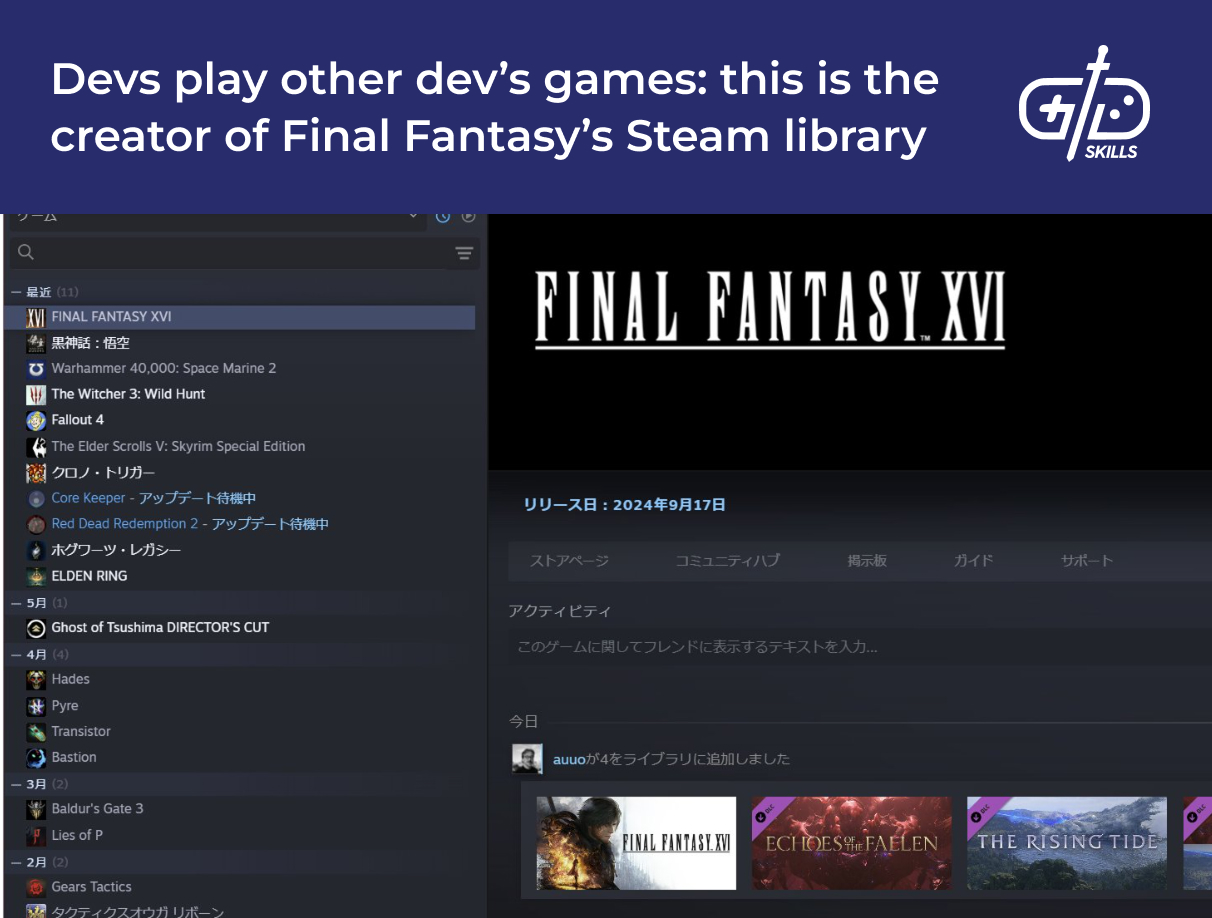
Game designers are familiar with computers to tweak games, but they’re not game programmers. Implementing new tools and technology from scratch is not a required skill. Examples of tasks done in the game engine are scripting, logic, behavior trees, and balance numbers and visuals. Level and narrative designers are types of designers that manipulate the game environment directly using a game engine.
Communication is another key skill for a game designer. Designers make decisions that shape the final experience in its totality. Designers work with experts in art, sound, and programming to help make a cohesive level, encounter, or system work.
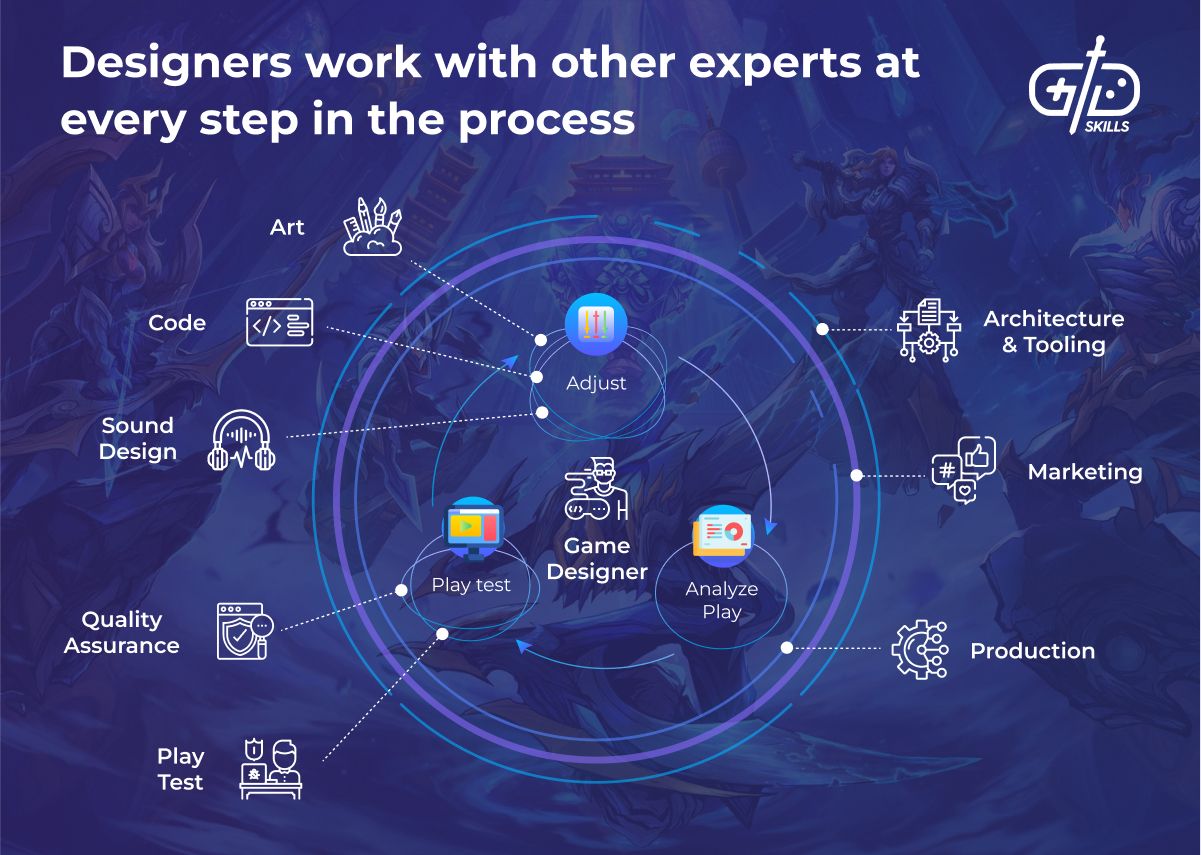
Design skills aren’t learned all at once. Use a broad variety of resources to gain that ability to understand game systems as learnable systems. Game Design Skills publishes informative and interactive content for new designers to build up design chops.
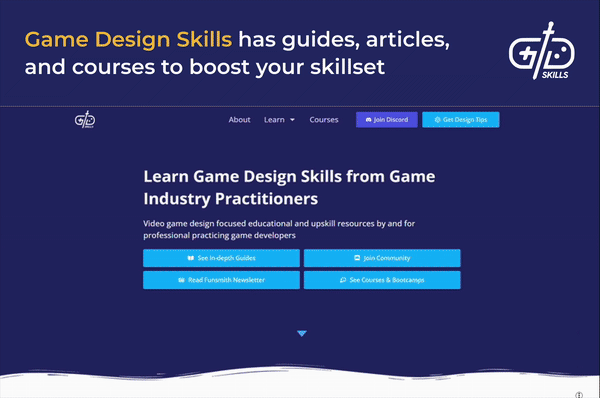
Game designers have practical and interpersonal skills, in a nutshell. Know that a beginner designer often only specializes in one subset of these skills at a larger game company. A new designer doesn’t need to be great at every skill at once! The list below summarizes the skills for ones who are unsure where to begin and want to know what developers do.
- The ability to shift his/her perspective effectively back and forth from the needs of the project to the needs and wants of the players.
- Objectively see through different types of players’ perspective, not just your own player type’s perspective
- Have excellent communication skills and the ability to work effectively in a team environment
- Understand market and gaming trends to ensure that their game is competitive and successful
- See patterns, understand how different systems are similar so you’re able to add variations without creating new systems from scratch (magic, stamina, and XP are all variations on resource management, for example)
- Art skills for diagramming levels, building the user experience, and storyboarding.
What is the path for a game designer’s career?
A game design career path falls in three categories. A permanent position at a AAA studio is one option. AAA provides the most opportunities for advancement, but for other designers it’s only a stepping stone. Founding a small studio yourself or joining a smaller team is another possibility for those who want more creative freedom. Solo devs are the third and final category, working on their own schedule and budget. Most designers start here, whether they’re building their portfolio, as a hobby, or to create a commercial product.
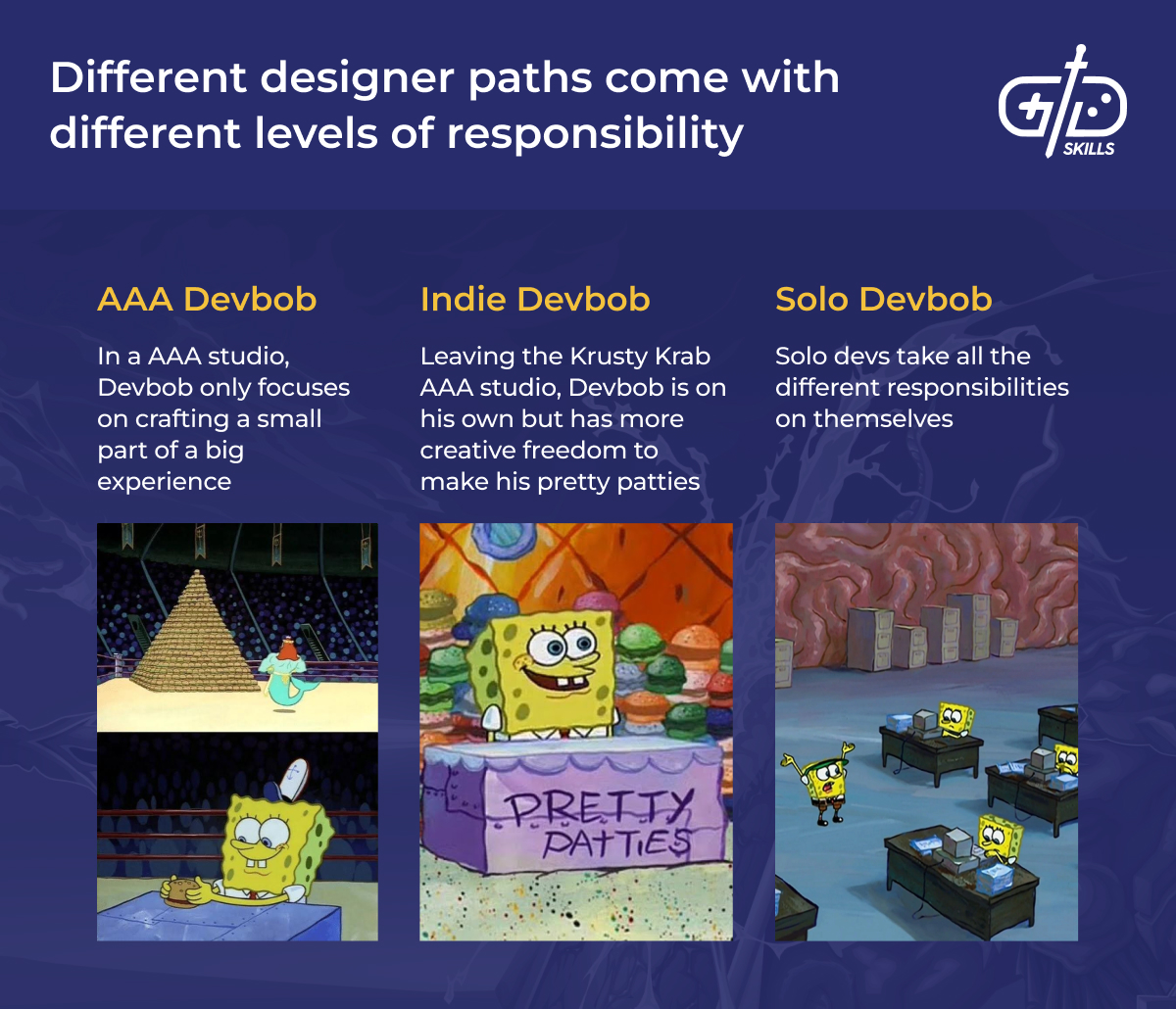
Designers at AAA studios like Blizzard, Ubisoft, EA, or Activision start their career with responsibility for only a small portion of a larger project. Junior designers are given a task by senior designers, and aren’t responsible for the overall vision or the final form of their creations. This could mean designing a part of a level, an enemy, or a few talents in the game’s leveling system. Experienced designers take more ownership over their assignments, although these are still limited in scope. I was assigned to revamp the Warlock class when I worked at Blizzard, for example.
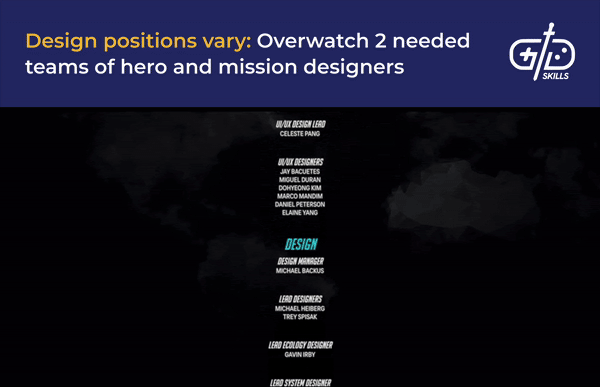
AAA designers typically switch jobs from time to time in the course of their career. Switching is good for earning a higher salary in all fields, but exposure to different ideas and mentors is another key ingredient to developing design skills. Plenty of designers stay in a mid-level position without working to advance to a leadership role. Other experienced designers switch outside the AAA sector entirely. The money and knowledge won from big studio experience provides both funding and expertise to break into the indie scene.
Indie development, the second path, offers the advantages of more creative freedom with the bigger resources of a team. One designer doesn’t need to wait on several artists or approval from a lead designer but gets to work iterating straightaway. Amir Rao of Supergiant Games touts just how quick ideas got developed once he started his indie studio. The whole team was amazed how fast the artwork and ideas came together without the need for constant approval, in a matter of months as they said in an interview with Game Informer.
Going the indie route means worrying about funding. A high-profile demo attracts publishers, but everything banks on a successful commercial release if no publishing agents nibble. Prominent indie dev projects such as Braid and Bastion were funded entirely from the dev’s own pocket, only making money back after the fact.
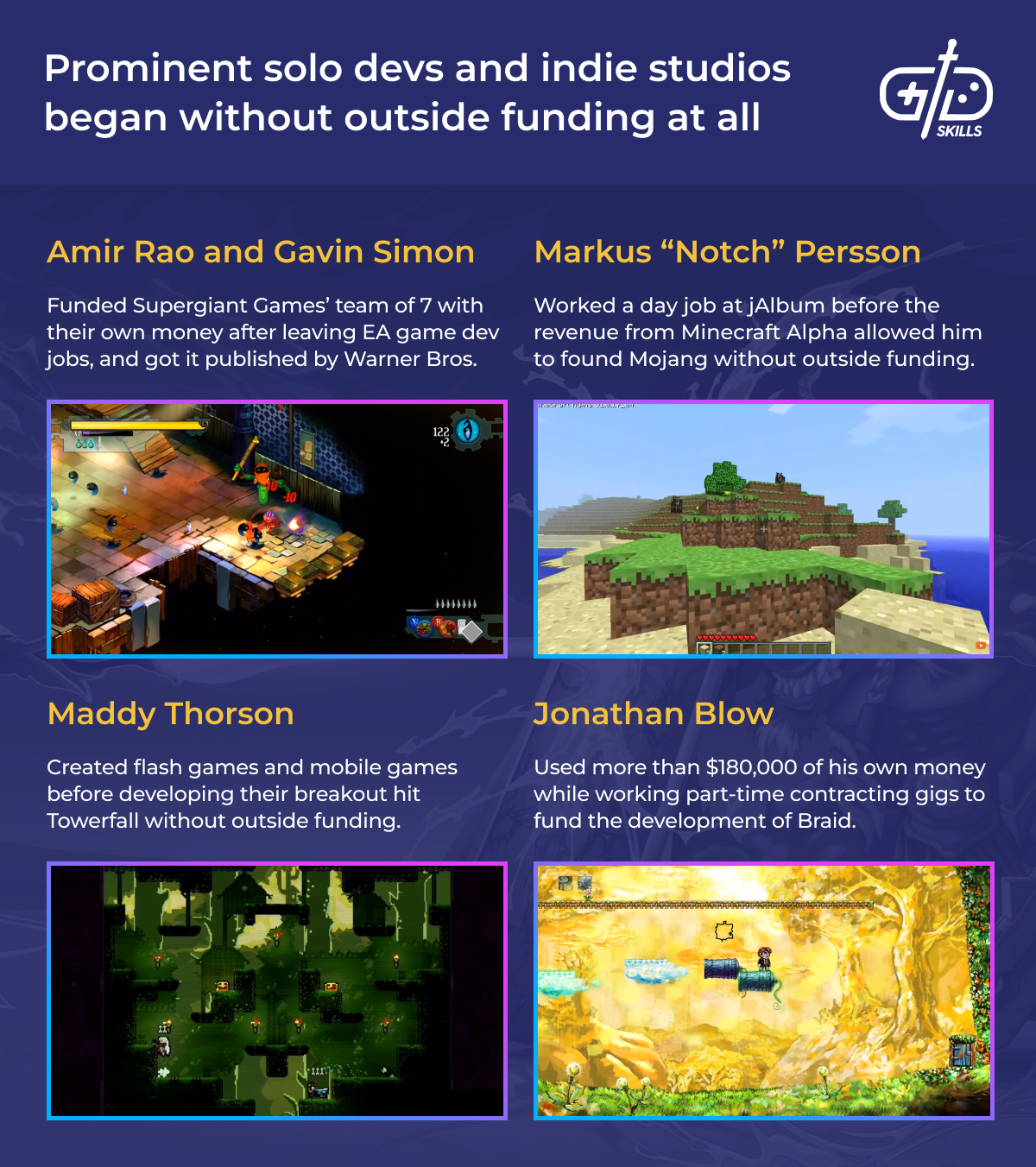
Indie startups are more volatile as a result of these funding issues. 50% of Indie startups shut down within the first two years of opening, meaning it’s do or die for the developers on the ground. Those looking to advance to management positions should stay in a stable AAA company. A small company means small room for growth anyway, regardless of volatility.
Self-employed designers are answerable to no budget, schedule, or plan but their own. Solo designers do this for several reasons. Some designers feel constrained answering to a larger studio. Most start out on their own anyway, building up a portfolio of projects. Minecraft, Stardew Valley, and Cave Story were all created by developers working on games as a hobby.
The barrier of entry for going solo to make money is high because several skills are necessary in addition to design. The people who go down this path need to be capable in multimedia – a mixture of technical, artistic and design skills – as well as being able to schedule, plan and budget their own time. Self-starters otherwise must source talents for the skills they need (but don’t possess) to complete their vision. Many people start down this route, only to pivot into working in larger studios to learn some lessons from more experienced designers.
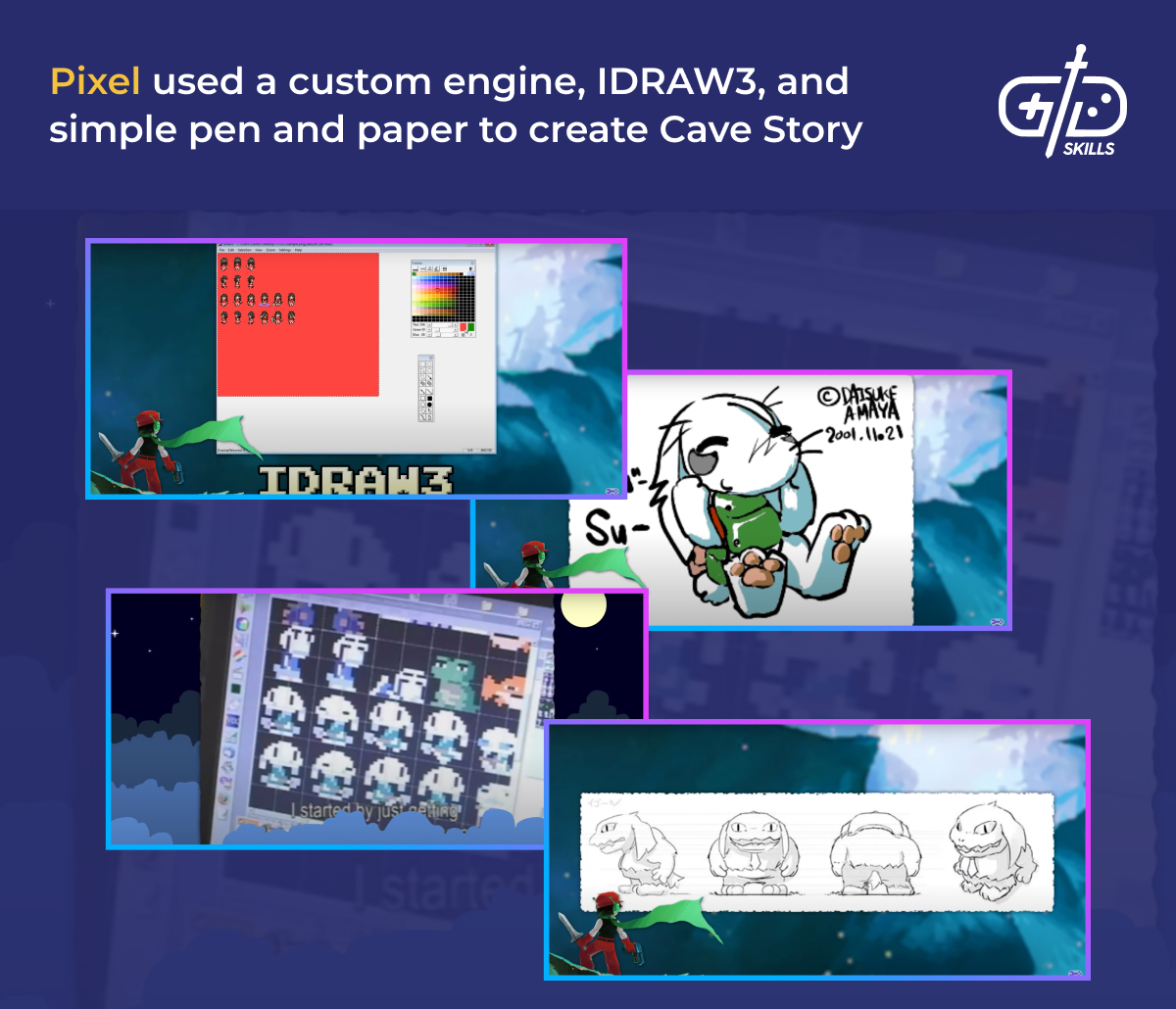
Getting experience in computer programming is a more important detour for self-starters. Solo creators implement their mechanics in a game engine on their own. Blueprints (Unreal Engine) and PlayMaker (Unity) scripts are two common game engine coding solutions. Designers with limited programming experience often reuse aspects of an existing game and just modify the game art (aka modding) and gameplay (scripting).
Solo designers don’t start off working in game development full-time. Many developers spend part of their time developing games and part of their time working other jobs—often better-paying ones—in a contract or part-time role. Maintain strict boundaries to keep your part-time work from leaking into your game development time, but don’t overdo it either. Burnout isn’t good for anybody.

Each pathway is viable, but has different risks and rewards. Working for game development companies brings lots of resources but also rigidity. Making your own game means you have all of the control, but also all of the burden to deliver. Solo designers take on even more risk than an indie studio for total creative freedom. Consider getting into modding to build a portfolio, that way the path is open from there to build up the skills needed for solo dev or to break into the industry.
Is game designer a good career?
Game design is a worthwhile career choice for those who are very passionate about creating games. The outlook for the industry at large is great: game development is a multi-billion dollar industry expected to grow in the next 10 years. Whether game design is a “good” career for an individual, however, depends on what you’re looking to get out of it. A game designer gets a creative career where they work with other talented and creative individuals passionate about games. What designers don’t always get is a career that pays all the bills or brings in a consistent income stream.
The main pro of becoming a game designer is doing what you’re passionate about: making games. Game designers get to spend time around other people passionate about the same things they are, which is difficult to find outside a creative industry. The paths ranging from hobbyist to AAA game director give a lot of options for turning that passion into an income, even if you don’t make it to the top. Senior positions in AAA studios bring in a salary of about $100,000 or more on average, and benefits as well, if you’re able to advance in a big studio.
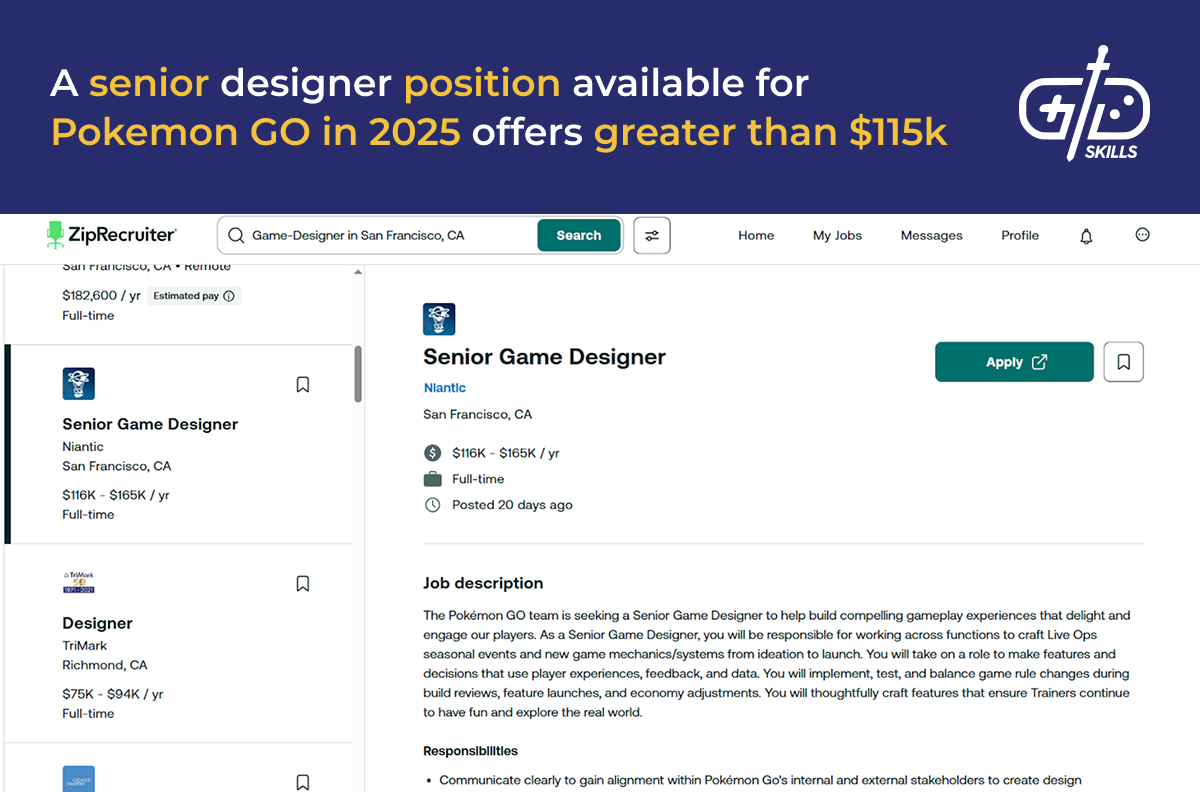
Being a game designer isn’t a secure career for AAA employees or independent designers. Staying solo is full of peaks and valleys. Self-employment is unlikely to pay the bills on its own for the average individual, but the highest earners make hundreds of thousands a year. In AAA studios, payment is more consistent, but layoffs are an issue. Shareholders wish to maximize profits, and the completion of a game project means a large studio is left with a lot of talent they don’t always need at the end of the process.
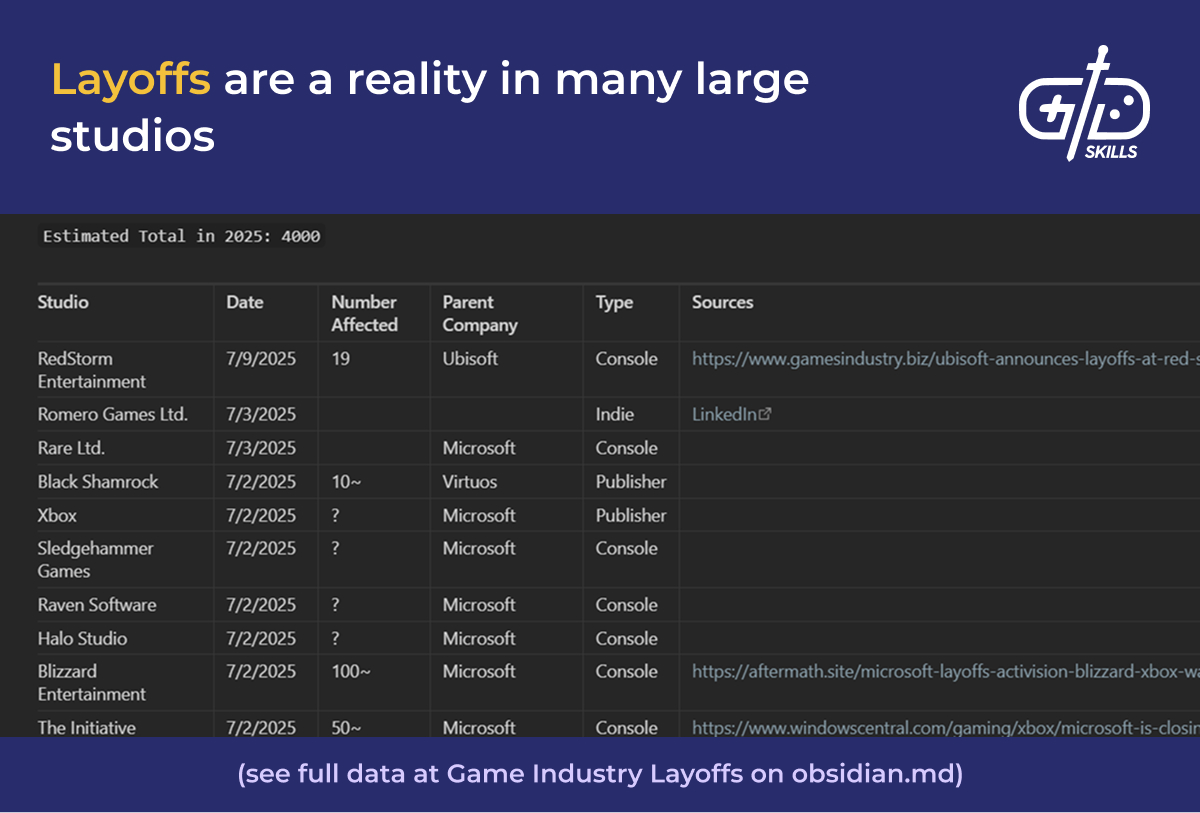
I recommend having a core career to keep you going and growing into game development over time, if you aren’t starting as a kid. Recent economic layoffs have made the game industry less approachable than ever, which is why taking this time to stabilize, grow your skills and prepare for the future is essential.
How to become a game designer?
Become a game designer by getting lots and lots of practice. Pick a type of game or skill you are comfortable practicing for a long time, then get to work creating games. New game designers commonly build their portfolio by completing challenges or game jams. Doing challenges online allows other devs to see this work and give feedback for improvement. After building up these skills, the next step is up to the individual: shape a portfolio for permanent employment as a designer in the industry, or forge a path ahead as a solo dev.

Find game design ideas in online communities. Game dev discords like our Funsmiths Club or the Game Dev League have big and small challenges to tackle. Examples of challenges from the League include writing computer log entries for an abandoned research facility or designing a mission given a character background. See our Build a Game Challenge here at Funsmith for another opportunity to build a portfolio.
Start small. Game jams are good opportunities to practice because they’re timed events where members must submit a completed game. Players keep the scope limited in order to bring the game from conception to a maturity before time runs out. The biggest game jams draw thousands of contributors and judges: Ludum dare, the GMTK Game Jam, the Epic Game Jam, and the Global Game Jam are examples of the biggest jams. Other game jams focus on specific genres, like the IF Comp (Interactive Fiction Competition), SCREAM JAM (Horror), and Boss Rush Jam.
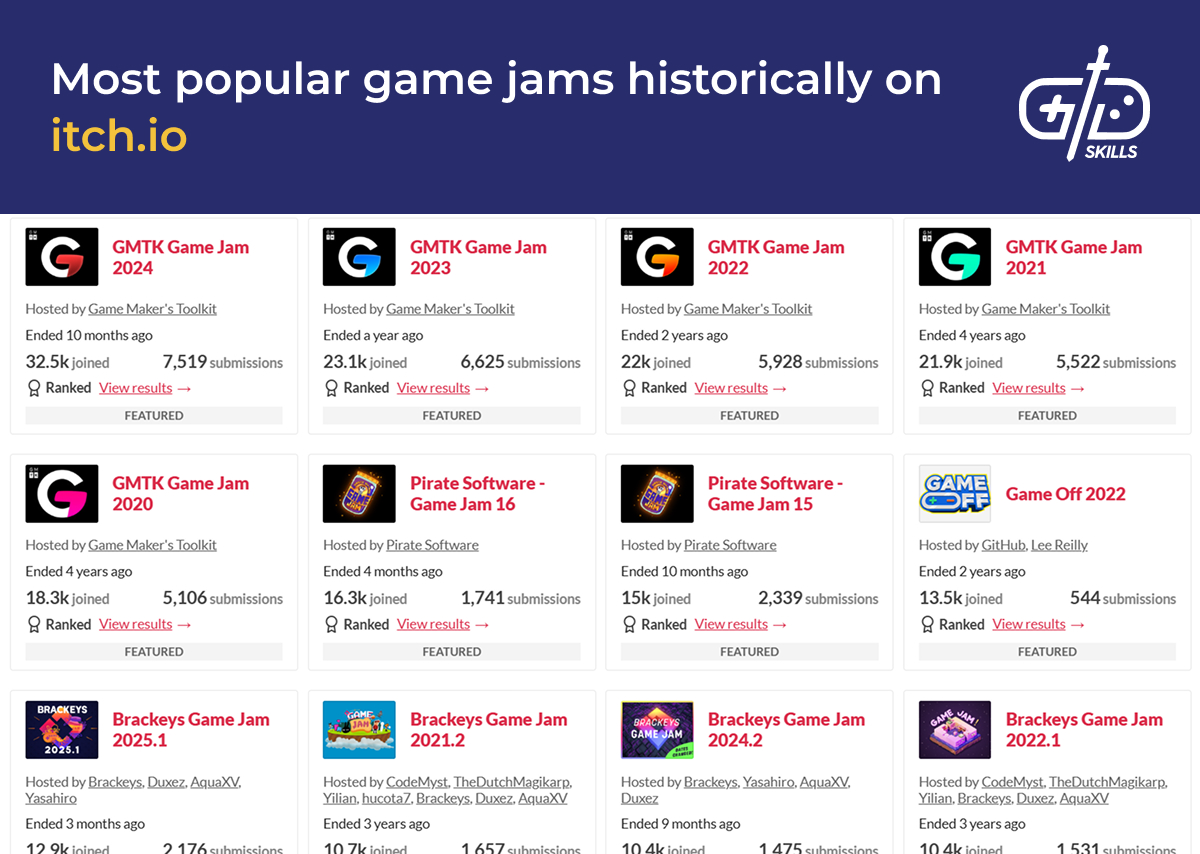
Designers usually build a portfolio by creating games, but many disciplines go into game design. The portfolio, education, and background experience look very different from person to person, as some people get into game design through adjacent industries. Deborah Chantson has worked as a narrative designer for years, and she got her postgrad degree in Television Writing. Chantson wrote for a children’s TV show first, but shifted to narrative game design when she began writing for the series’ interactive spinoffs.
What degree do you need to become a game designer?
You don’t need a degree to become a game designer. Most game developers have a bachelor’s degree, but their major isn’t always game design or computer science. Valve hired modders, waffle house managers, and chemistry majors to build Half-Life in the studio’s infancy.

A computer science major isn’t a bad idea for a college student interested in game design. Programming languages like C#, C++, or Python are useful in the industry and demonstrate a familiarity with the technical side of software development. Graduates also gain math skills, logical thinking, and a detail-oriented mindset that look good on a resume. Said skills additionally make a game designer more flexible, so they’re able to work computer science jobs while they foster their game design talents, or take on software development work when the job market is in a slump.
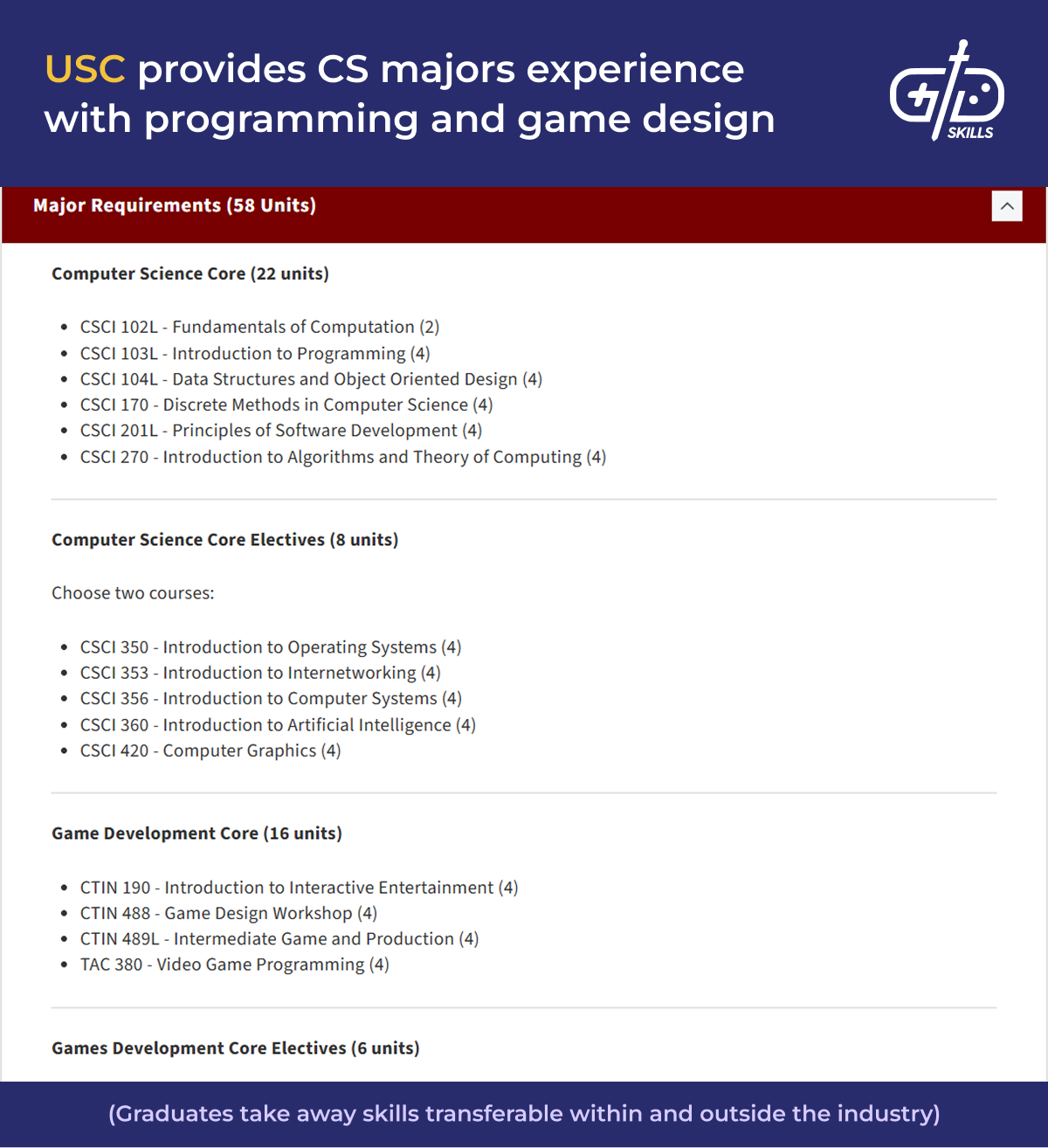
Game design degrees are increasingly common, as coding skills aren’t the only tool designers need. The game design track focuses on building a portfolio through collaborative projects, which more closely matches what a designer does in a studio.
Getting a degree in game design puts students in dialogue with industry professionals early. Several big game dev schools host conferences. Students show off their capstone projects to AAA studios and some devs get hired at studios like Ubisoft, Blizzard, or Valve. The NYU games center hosts PRACTICE, which brings in industry guest speakers to discuss video game design, tabletop game design, and even sports. Carnegie Mellon and other top universities have partnership programs that get students working with experienced designers in the industry.
How long does it take to become a game designer?
Becoming a game designer takes years. 10 years passed from my first experiences with Graal online to earning a job at Blizzard. Professionals and indie devs need to get a lot of practice before they’re ready to break into the industry.
Designers who stay solo take years to break in too, if they do. Daisuke Amaya made Cave Story over 5 years as a hobby and released it as freeware. He did this in addition to his day job, so it required long hours for no immediate payoff. Toby Fox spent almost 3 years working on Undertale, after several years of making RPGs for his friends. Finally, and most recently, Balatro took about two years to create, but the development process began much earlier. The idea began as a multiplayer version of Big Cheat, a card game LocalThunk created with his friends a decade earlier.

Dean Tate is a designer whose career says a little more about how long it takes to get into AAA development. Tate started as a teenager by making maps for Unreal and Unreal Tournament for four years. He joined Irrational Games immediately afterward and worked on two projects over the next 4 years, Tribes: Vengeance and SWAT 4. Tate’s third project was Irrational Games’ 2007 release BioShock, which was a breakout hit and a big selling point on his resume. In total, 9 years passed from his earliest experiments to the release of BioShock, although it took about half that to get a job in the industry.
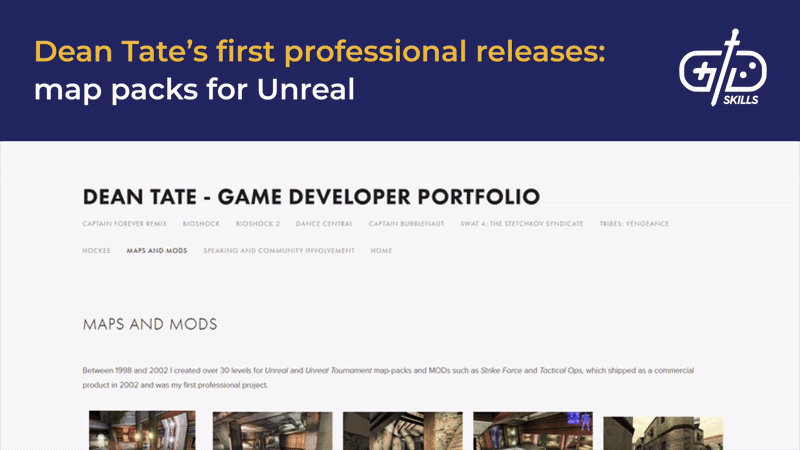
Designers who do get an education should design games during college, since that means graduation brings a degree and a portfolio. Even a degree doesn’t make the process much faster. An undergrad degree takes substantial time, 4 years, plus 2 for a master’s. In all cases, expect a lot of practice to come between starting out and earning a design job.
What are fun facts about video game designers?
Fun facts about video game designers include the surprising size of the game industry, the unexpectedly old origins of the field, and the unusual places their ideas come from. The earliest game designers had to break away from existing industries to form the still young field of interactive entertainment.
The first designers to release a commercial product were Nolan Bushnell and Ted Dabney. They released the arcade game Computer Space in 1971. The game was commercially successful, with sales of over 1,000 cabinets. The game industry has come a long way, growing from 2 to 11 million developers worldwide in 50 years!
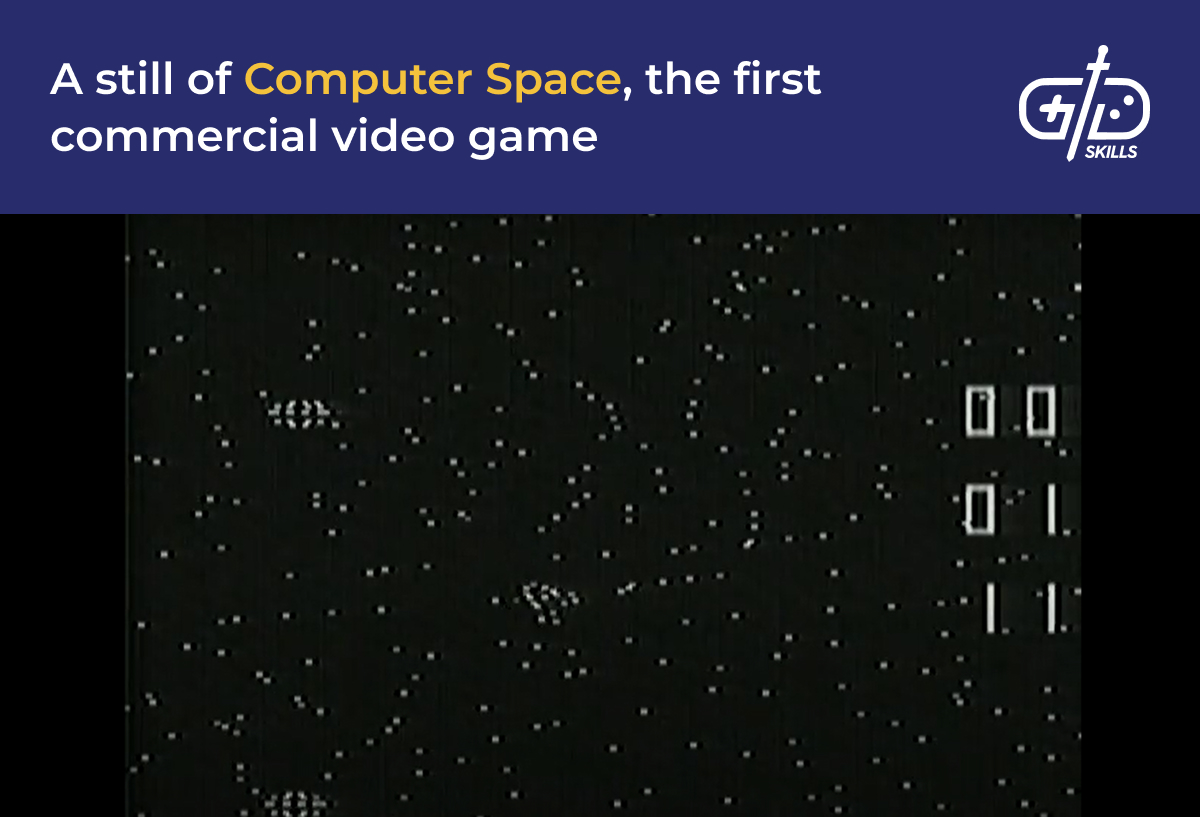
Game designers aren’t the only source for new ideas. In the original Half-Life, ideas came from everywhere. Valve started off with a ragtag group of modders and chemists. The chemist programmer created the Gargantua enemy and the train, and then the designers took those ideas to design a level. Dario Casali created a whole level based on the dam the concept artists created.
Below is a list of some more facts about game design that not everyone is aware of. There are so many designers in the world, so see just how big the industry has gotten.
- Game designers aren’t exactly the same as game programmers and game developers. Anyone who works on a game is a game developer. All designers are developers, but not all developers are designers. Designers come up with ideas and mechanics, and programmers support the designers by implementing their ideas.
- The video game industry brought in $455 billion worldwide in 2024.
- 11.1 million game developers are employed in the world, according to a survey on /Data. CareerExplorer estimates there are 287,000 designers employed in the US. The data is unclear on whether these surveys separate designers and developers, but all data points to a competitive market in the US and Europe.
- You’re able to follow your passion in a creative field! Not everyone knows it is possible to make money from your creative passion: writing, drawing, or painting. (The skills I have just listed are good for narrative or environment designers too!) Game Design Skills has covered several ways to turn passion for game design into an income.
- Not everyone does game design as their main job. Eric Barone was an usher at a theater while he made Stardew Valley.
- 52% of self-employed developers made the majority of their income from games, according to the IGDA Developer Satisfaction Survey
- 97% of game developers from the IGDA survey have some amount of college or vocational school training. This doesn’t mean they had degrees in game design or computer science!
What are the responsibilities of a game designer?
The responsibilities of a game designer are as many as there are paths. Developing maps, designing game rules, polishing the gameplay experience, and creating levels are all roles in game design. The path for a game designer’s career branches into eight main sub-disciplines. Different studios further sub-divide these 8 roles.

Game designers of all types share responsibilities in common. Designers brainstorm ideas and create documents to communicate their vision. Designers set up behaviors, adjust balance and communicate the goals to the rest of the team. Video game design is a mixture of communication, writing, and data entry work.
Responsibilities further differentiate based on role. Below’s a list of different types of game designers and their specific contributions to the overall experience.
- Mechanics designers create features which allow players to affect the world, enemies, and allies around them.
- Level designers set up interesting challenges that teach players about the gameplay and direct them to explore both the game world and underlying lore. Level designers, like narrative designers, diagram the level into beats, moderating the pace between intense and relaxed sections.
- Combat designers use animation, timing, and visual effects to clearly communicate success and failure in combat.
- Systems designers create interlocking parts to encourage the players to grow, explore, and experiment. Examples include leveling systems, talent trees, spawning tables for monsters, and so on.
- The term content designer, in contrast with a systems designer, is a catch-all term for designers who fill in the game after the core is built. A systems designer asks how all quests work, and a content designer asks how only one quest works.
- Narrative designers make sure the environment, character, and quest content match the story and theme of the world.
- Technical designers use their coding experience to design elements of both the player-facing game and the technical foundations they’re built upon.
- Balance designers adjust gameplay parameters to make the experience feel healthy and fair for the target audience. In competitive PvP and team-based games, this means ensuring diverse play styles continue to exist at the top competitive level.
- Sound designers create music and mix in sound effects to make the experience feel natural, comfortable, scary, or mysterious.
All game developers have a responsibility to communicate with their team. They explain their vision to the artists and programmers who implement their ideas. The management of the studio needs convincing that their ideas are worth bringing to fruition.
What is the work environment for a video game designer?
The work environment for a video game designer is usually a remote work arrangement. The relationship between an employee and their employer is often regarded as positive, but certain contractors have less protections and benefits in the workplace.
Video game design is a telecommuting-friendly industry, but less and less so the more corporate it gets. The GDC State of the Industry survey looks at the careers of over 3,000 developers. 40% of developers surveyed in AAA studios reported having a mandatory return-to-work policy. The numbers go down for AA and indie studios, where work from home is much more common and nearly universal.
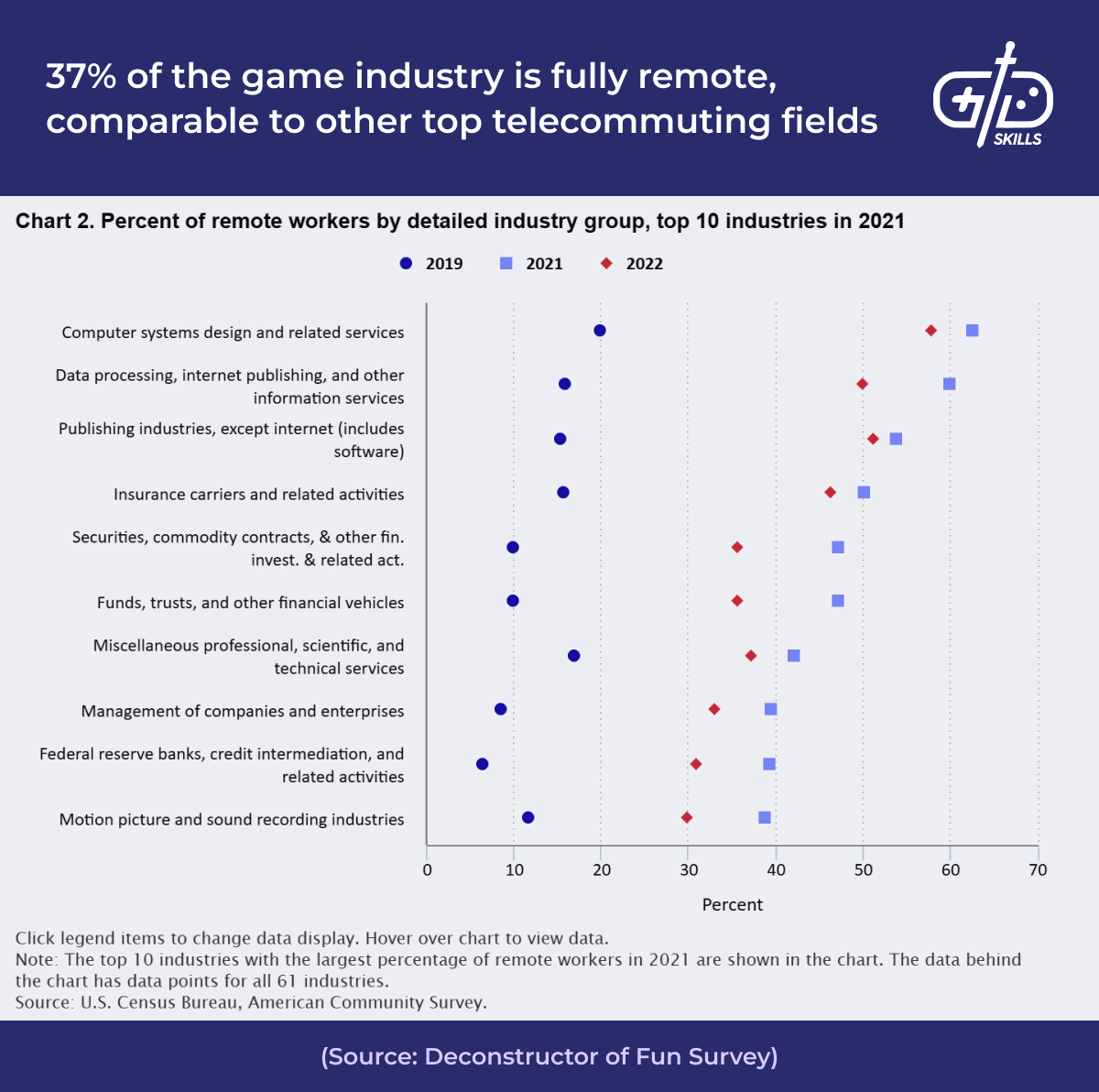
A designer looking into the composition of the industry expects on average that their coworkers are Caucasian men. The average game developer in the IGDA survey, as a proxy for game designers, is male, from the US, in their 30s, and married with no children. In the US specifically, 70% of developers are male, and about ⅔ of developers are between 25 and 44.
Efforts to secure benefits for games industry workers have more progress to make, as in any industry. Only 5% of devs in the GDC State of the Industry survey were unionized. Freelancers have fewer protections and benefits than their AAA counterparts. Individual freelancers working contract to contract rarely get benefits, and a large percentage earn less than $15k/year from their game dev jobs. Understand what it is you’re sacrificing before working in this field.
Most employees report having good relationships with their employers. Half the workers in the IGDA survey felt their employers resolved work problems between employees, 49% to be exact. The majority of employees, 65% of survey respondents, said they had good or excellent relationships with management, so don’t be discouraged: there are welcoming work environments out there.
What software do video game designers use?
Video game designers use art, planning, word processing, and productivity software that is common in the business world. All are familiar with a game engine, which varies from freely available software to in-house proprietary tools. Narrative designers and level designers serve as examples of different workflows here, since they demonstrate most of the tools the average designer uses.
Narrative designers use software to plot out story arcs, quests, cutscenes, and other situations in which plotting out a scene with a graphic is helpful. Word processors are a natural tool for writing “screenplays” and text for games. New narrative designers who want to focus specifically on writing often create text-based games. Twine is a good way for beginners to practice making text-based games with an easier interface. Arcweave and Miro let users create and share flowcharts, planning and communicating the story flow beforehand.
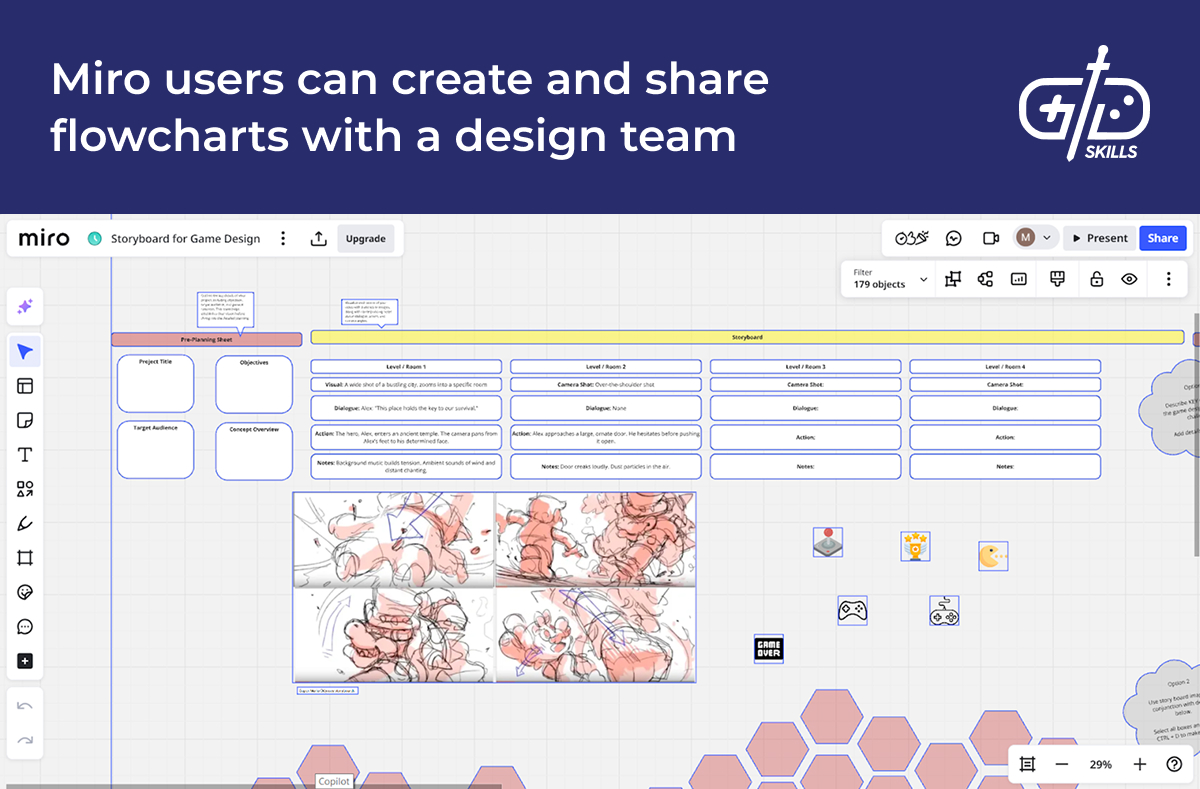
Level designers use any tools at their disposal to plot level layouts. Level concepts start low tech with 2D drawings and layouts. Miro or Visio help with adding drawings and showing off the intended flow behind a level to the rest of the team. Once the plan is laid out, level designers block out the environment in 3D. Blender, Maya, or 3DS Max are common industry 3D modeling tools. Level designers test these bare proto-levels in the engine and tweak them until they’re ready to be polished. The Uncharted 4 development documentary shows what a blocked out part of a level looks like.
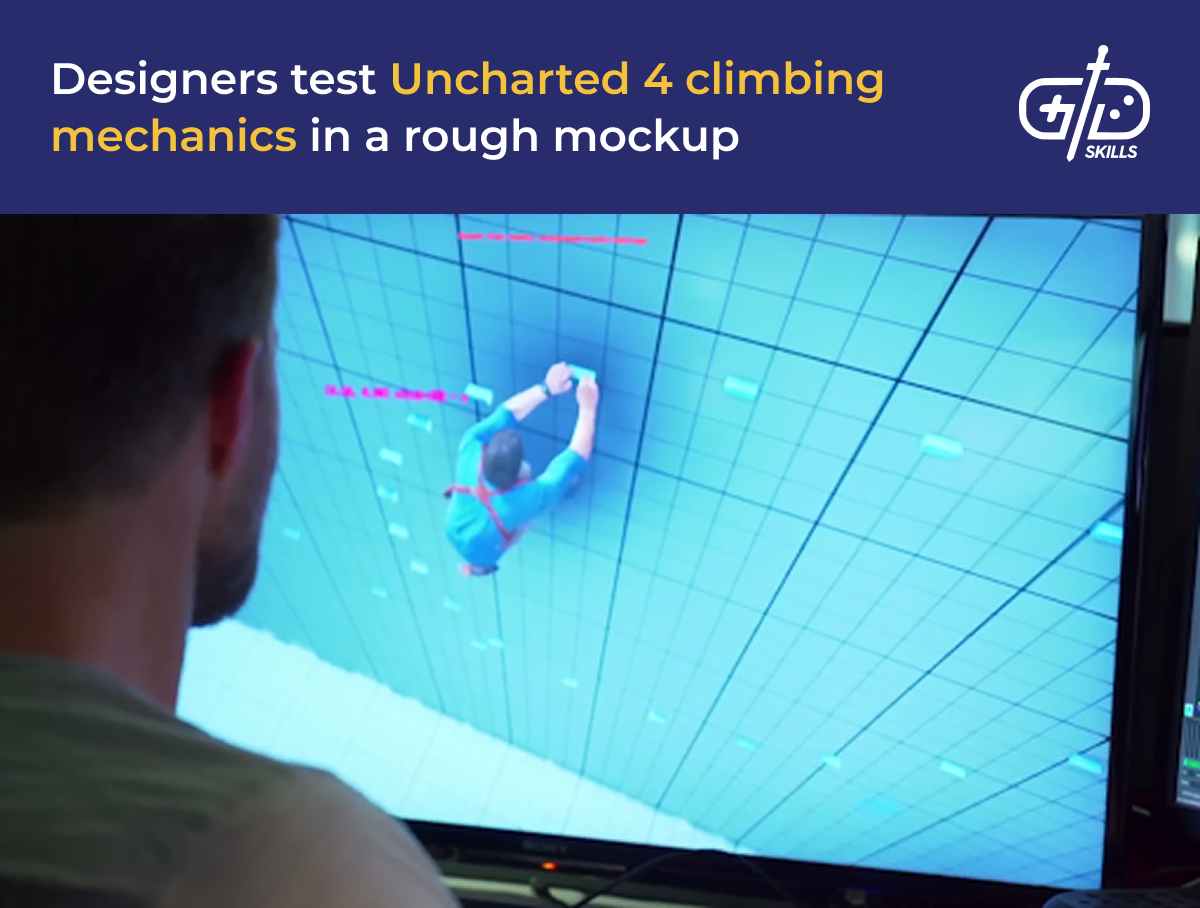
Game designers use the game engine of their studio’s choosing to implement their ideas. The game engine tells all the parts of the game how to work together, and comes with an interface telling those pieces exactly how to interact. Unreal Engine 5 is quite common, and alongside Unity is freely available for beginning designers. Epic Games, the creator of Unreal Engine, is a large, profitable, and powerful company; those looking for independence from the current industry standard have other options too. Godot is free and open source, putting the game creation process beyond external oversight.
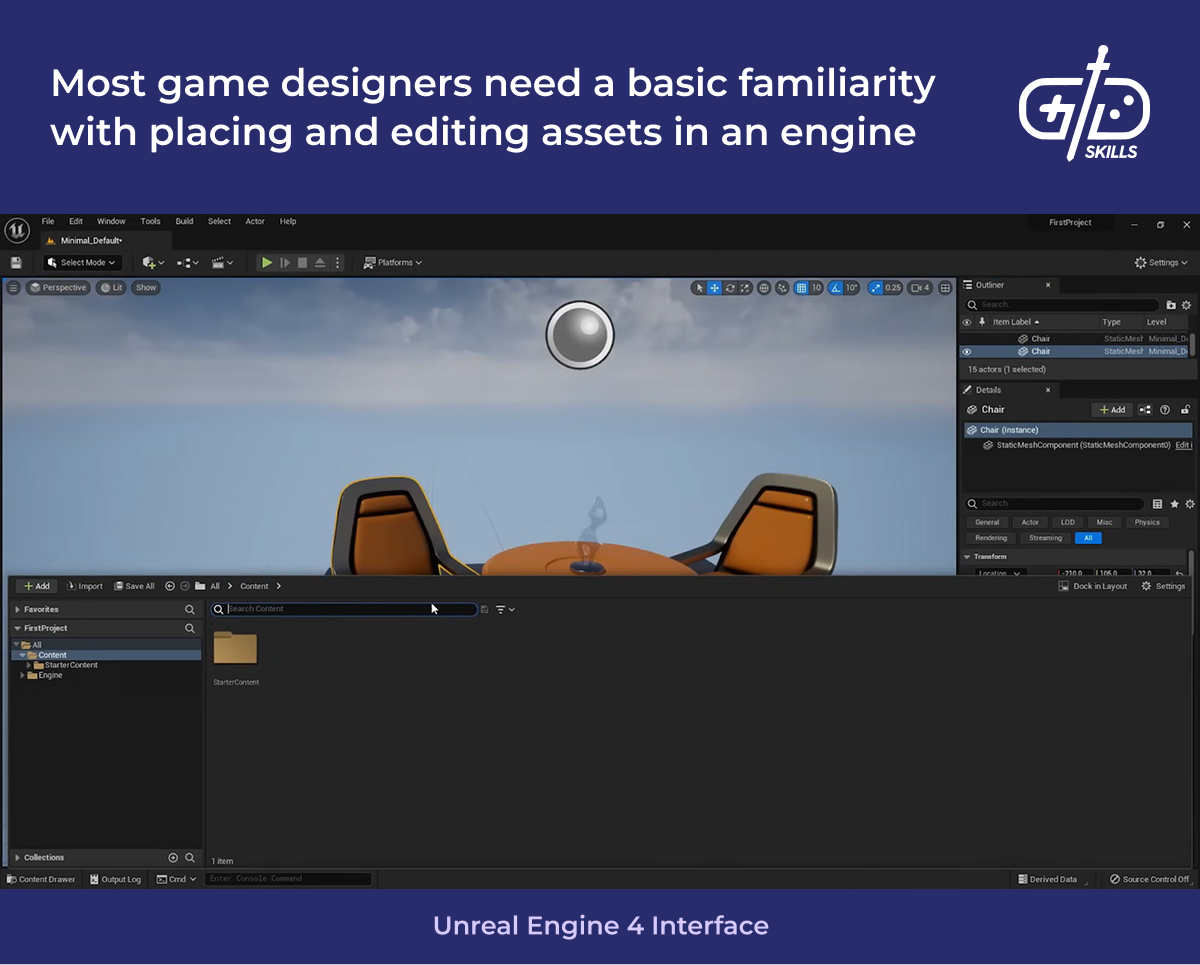
Game designers use common workflow management software as well. Designers are part of a team, and their job is communicating with leadership and other developers to make a creative vision come true. Software for communication is naturally part of the toolset. Slack, Discord, and Zoom, as mundane as it seems, are important software tools for a designer too.
How many hours does a video game designer work per day?
A video game designer works about 8 hours per day on average, although this varies greatly. Software development cycles come in waves. A new project starts, and as the deadline approaches, it’s all hands on deck to bring the project to completion. Pulling back from “crunch”, as this extended period of long hours is called, happens after the game ships.
Crunch doesn’t always come with extra compensation, as overtime pay conflicts with the aim of finishing the project faster. The project won’t finish if it goes over budget. Consider the different ways game designers are compensated for overtime in this graph.
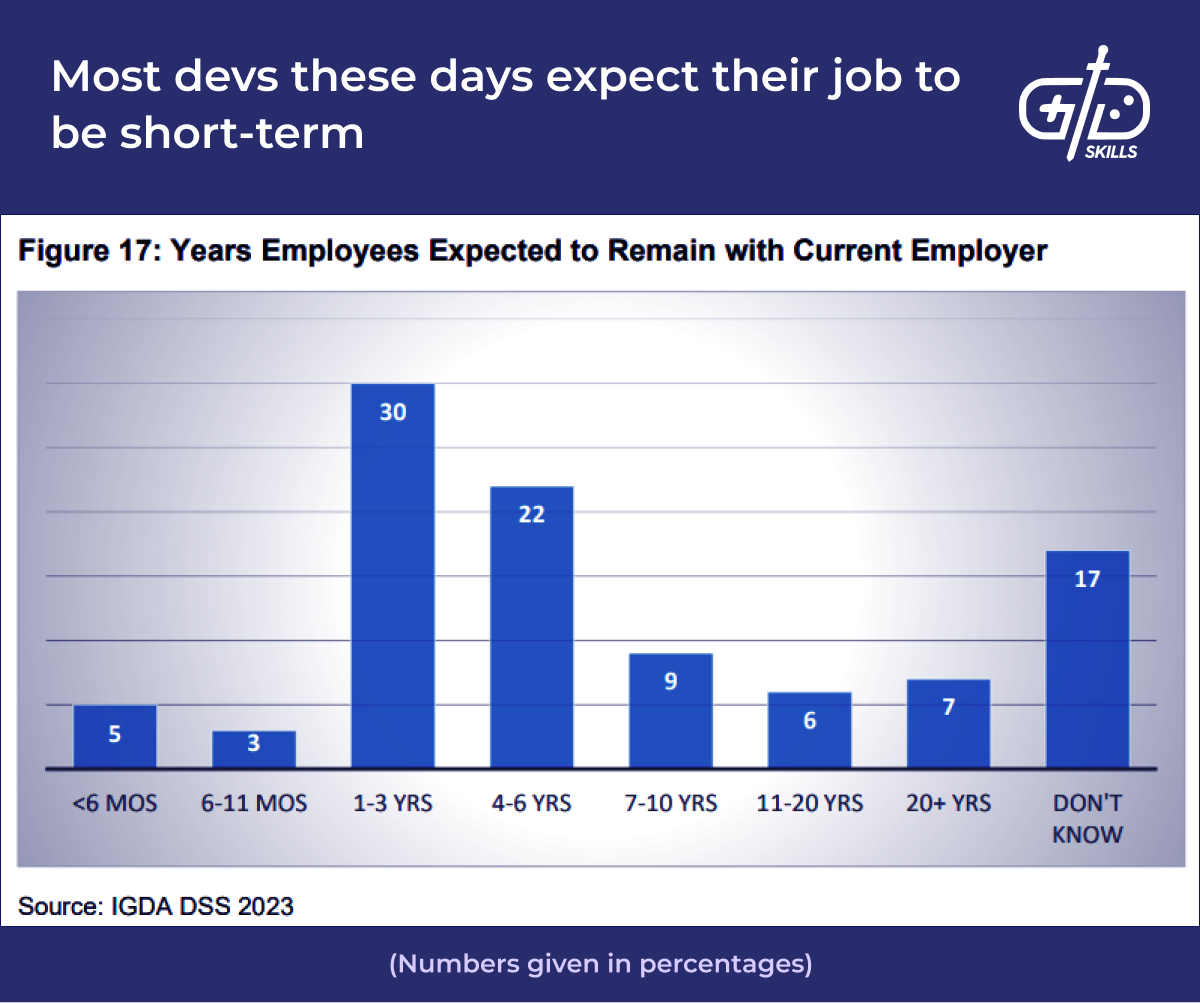
All types of developer, from solo to AAA, experience crunch occasionally. Just over 75% of developers in the GDC survey worked some kind of overtime in the past year, and 23% had worked more than 60 hours/week at some point in the previous year. ⅓ of respondents reported an average workweek of greater than 40 hours.
What is a typical day in the life of a video game designer?
Game designers start their day much as any worker in the business world. Wake up, brew some coffee, and begin by checking emails. The rest of the morning is spent replying to messages or scheduling meetings for more complex topics best discussed in person.
The subject of meetings varies. A morning meeting with other game designers typically involves discussing features that have already been implemented. Meetings with management entail explaining where the project is at or what the latest features add to the game.
Designers have more free time to make progress with new features after lunch. A designer talks about their plans with other developers or brainstorms new ideas. Implementation of the features begins here if the team has already come to a decision about what to work on. Designers respond to feedback on these features from playtesting, tweak values, and repeat the playtesting cycle at this point in the day when a prototype is ready.
What is the average salary for a video game designer?
The average salary for a video game designer is close to $100,000, if the industry average for experienced employees is representative. Online estimates don’t always include solo devs, who range from making no extra money to hundreds of thousands of dollars. Read on to see how rates vary and what they look like in different parts of the world.
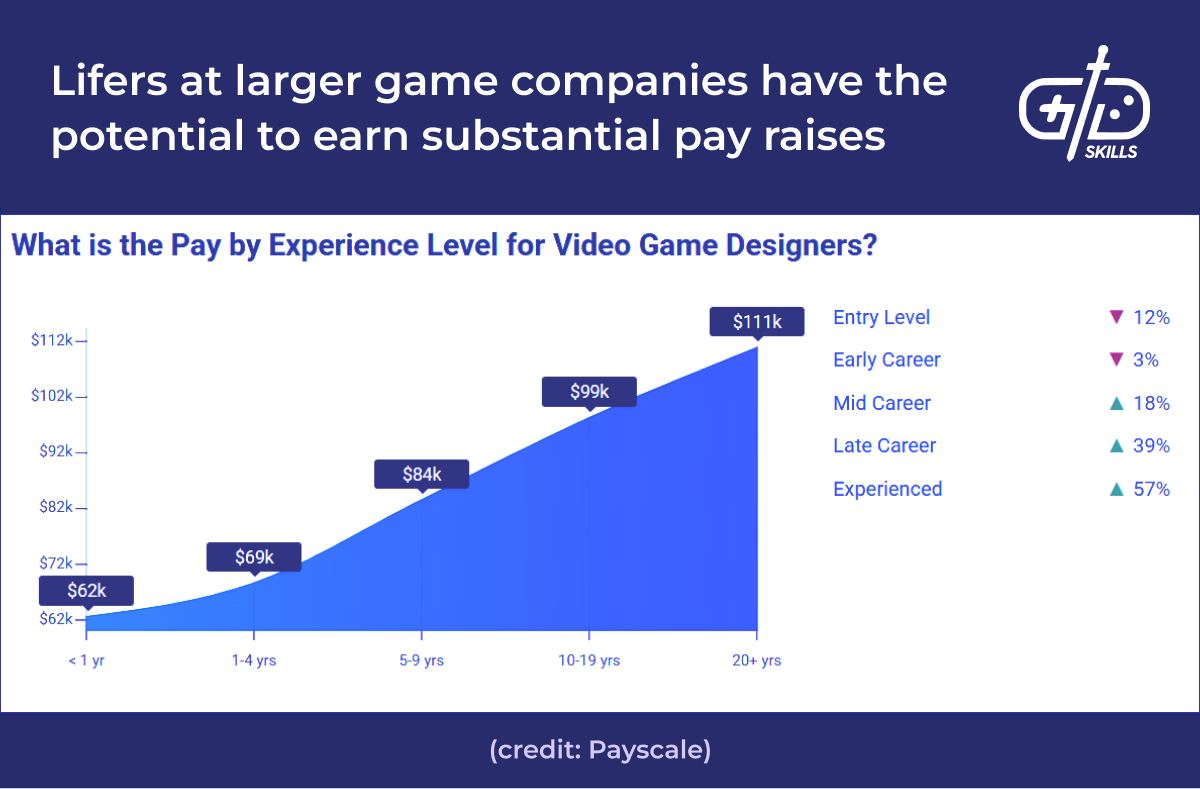
Sites online give varying estimates for game design salaries, since game designers are frequently confused with game developers and other software designers. Designers generally make more money based on the studio, seniority, and whether they’ve moved up to a management position. Estimates range from as low as $70,000 to well over $100,000.
- Payscale: $70,730
- Indeed: $88,886
- Careerexplorer: $90,270
- Ziprecruiter: $149,118
Salaries vary from state-to-state within the US, and around the world. The highest paying state is Washington, with an average salary of about $160,000. Florida has the lowest salary on Zip Recruiter, still as high as $111,000. The average salary for game developers outside the USA shows significant geographical variety, with a game developer earning an average of €38,000 per year in Dublin, $47,680 per year in Stockholm, and €15,708 per year in Shanghai.
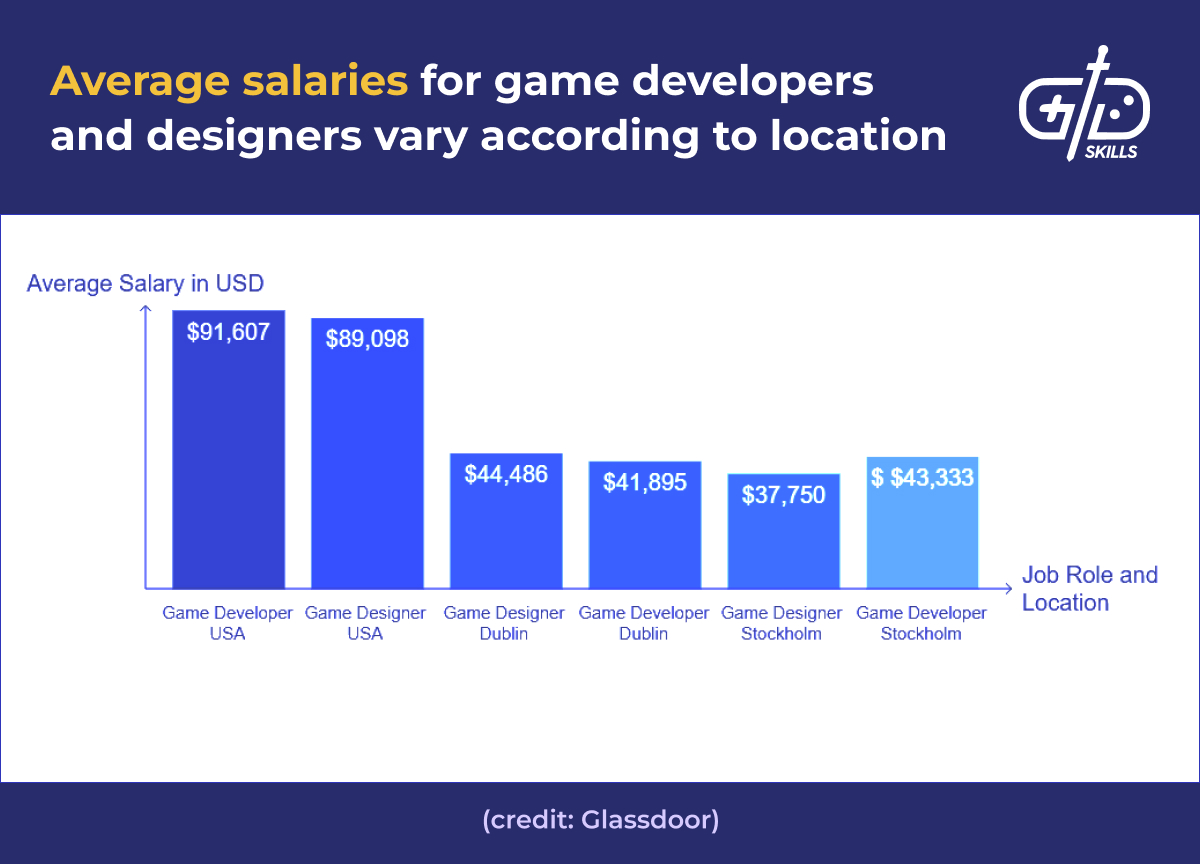


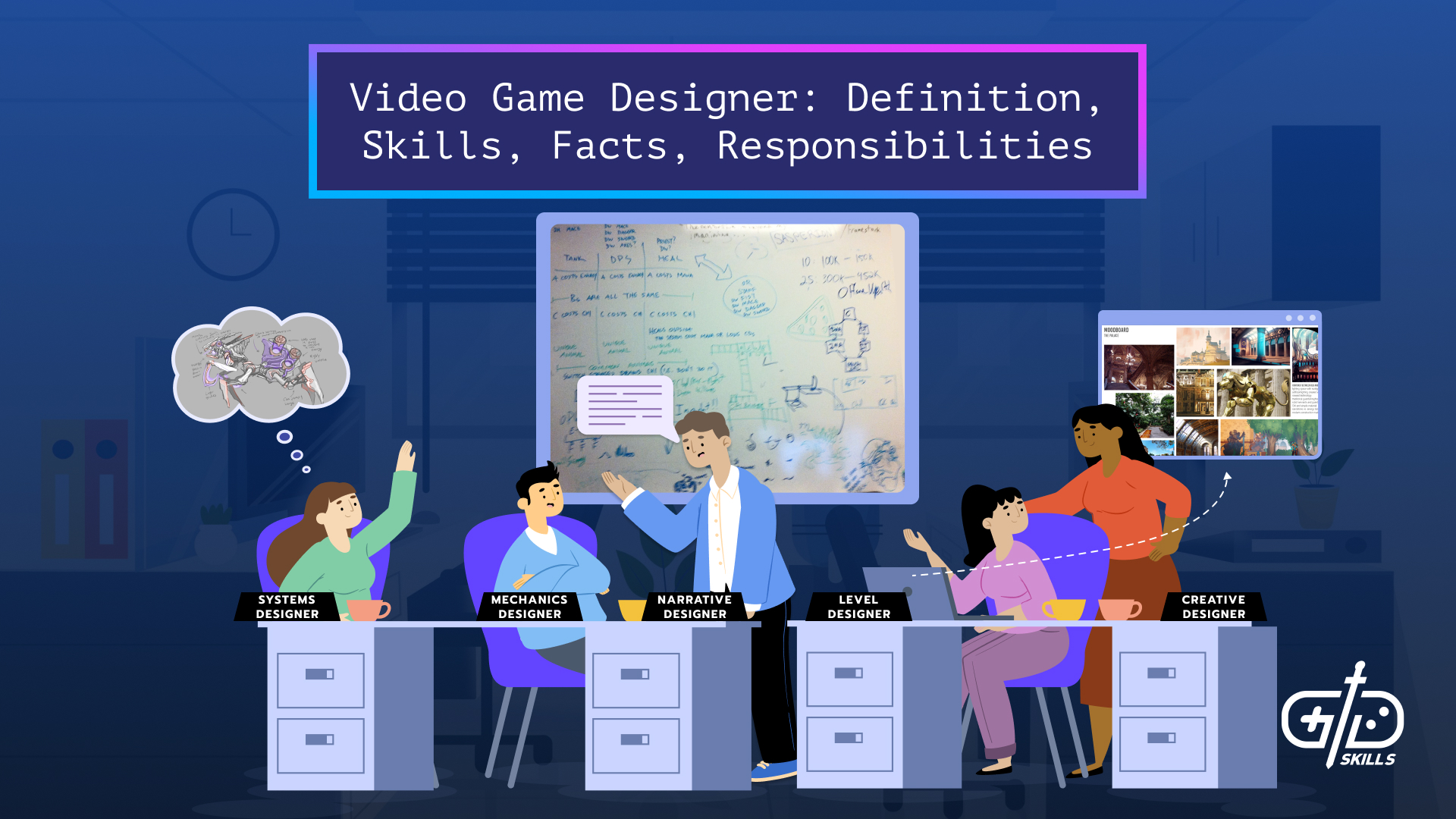








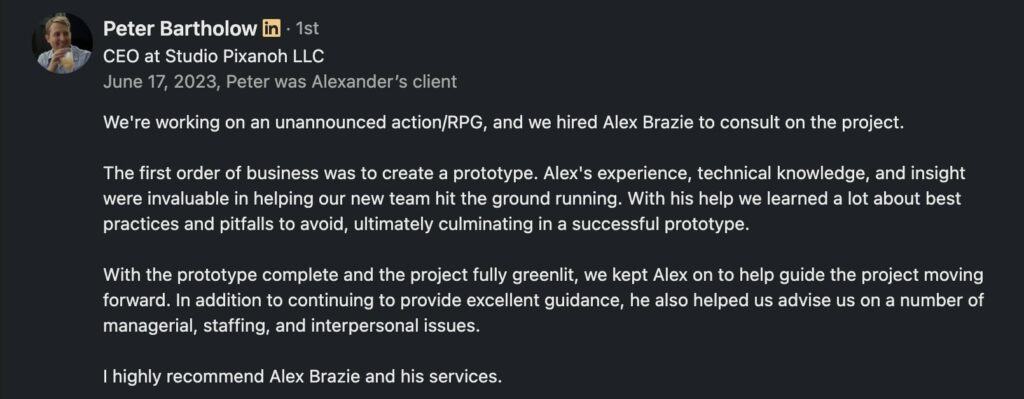

One Response
Thank you, this post explained everything really well and clarified many questions I’ve had! The visuals are especially helpful :3